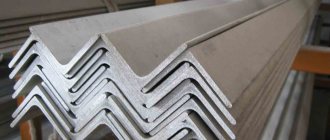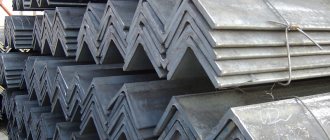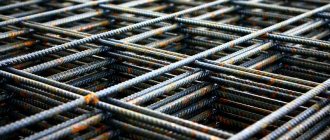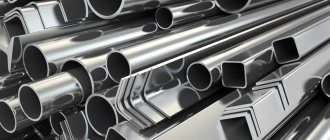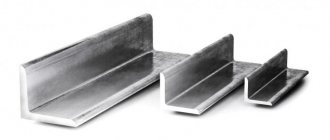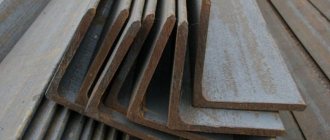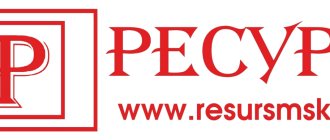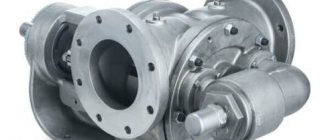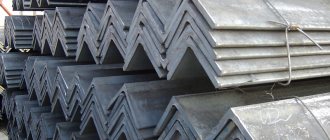Steel angles are the most popular rolled metal product. These products are regulated by state standards - GOST 8509-93 and 8510-86. The range of corners includes several varieties, each of which has its own characteristics and purpose. The regulatory documentation specifies all the necessary geometric and physical parameters of the products. This allows appropriate calculations to be carried out during construction work.
In the regulatory documentation that regulates steel angles, you can find all the useful information about them
Why do we need GOST standards for equal angles and other types of products?
Standardization of rolled metal products makes it possible to control their quality and dimensional characteristics. GOST helps determine the necessary geometric indicators, which are a very important component of construction calculations. For example, the range of equal-flange angles (GOST 8509-93) includes a complete list of dimensions and technical characteristics of these products. Let us dwell in more detail on the functions that GOSTs perform.
Metal corners are available in a wide range of sizes
Quality control. If you deviate from certain standards, a performance problem may arise. Therefore, the first and most important task of state standardization is quality control, which involves recording the parameters of these parts.
Note! The entire range of metal corners is made taking into account GOST standards and the maximum permissible deviations specified in them.
Simplification of notation. Metal parts of this type are available in a wide range of sizes. Without regulatory documentation, all information about quality characteristics would have to be indicated in the product labeling.
Quickly find the part you need. Tables of the assortment of equal angles and other varieties of these products are indicated in GOSTs and allow you to quickly find the desired element. Classification according to basic parameters greatly simplifies finding corners and introduces them to their properties.
The entire range of metal corners is made taking into account the relevant GOSTs
It is worth noting that this documentation contains more than 10 different characteristics, arranged in tables with appropriate symbols. In turn, in order to find the markings used, a special drawing is used. The cross-sectional diagram also makes it easier to find the required characteristics.
Permissible deviations during production according to GOST 8509-93
Steel profiles with the same flange width are produced in two classes - “A” increased accuracy and “B” normal accuracy. Deviations in the sizes of corners, taking into account their type and class, are shown in the table below.
Table 2. Numbers of corners and permissible maximum deviations for shelf thickness
At the same time, the values given in Table No. 1 for the radius of curvature of the profile are uncontrolled values used for calibrating products. GOST allows the production of steel corners with equal shelf widths with offset deviations, if required by the consumer. The displacement is carried out along the thickness of the shelves, replacing them with deviations in mass. Acceptable parameters for offset are shown in the table below.
Table 3. Permissible deviations by weight
According to GOST 8509-93, the deviation of the shelves at the top of the external corner should not be more than 35′. Acceptable values are shown in the table below.
Table 4. Permissible shelf deviations
Main characteristics of corners: GOSTs and parameters specified in them
In the regulatory documentation that regulates steel angles, you can find all the useful information about them. Using the appropriate GOST, it will not be difficult to calculate the material required for the construction of frame structures of varying degrees of complexity. Let's consider the main characteristics that can be found in regulatory documents or calculated using them.
To carry out construction calculations, you will need to calculate the mass of the corners. Calculating the weight of one linear meter allows you to determine the load factor acting on the structure. This indicator depends on the type of product and its dimensions. The size of the corners is an important parameter, as it determines the performance of these products. Length, width, and wall thickness - all this data is taken into account during construction. It is also necessary to take into account the shape of the products.
Changing the thickness index affects the performance characteristics of the corner
Another parameter worth paying attention to is the cross-sectional area. This indicator helps determine the load factor. GOST for corners contains special tables that simplify the search for the necessary information.
Experts recommend paying attention to the radius of curvature of the metal product. Typically, this information is contained in the drawings. This value is not controlled, but it is necessary for calibrating parts.
All steel corners are divided into two types according to the shape of the shelves: equal-flange and unequal-flank. The tables that comply with the standards contain information about the thickness of the corners. GOST 8509-93, the assortment of which regulates equal-flanged products, as well as document 8510-93 (contains information on unequal-flanged angles) can be easily found on the Internet.
It is worth noting that changing the thickness index affects the performance characteristics of the parts. In this case, a certain pattern can be traced. The higher the thickness of the shelves, the stronger the corners themselves, which means the higher their resistance to stress.
Using the appropriate GOST, it will not be difficult to calculate the material required for the construction of frame structures
Types of steel angles: GOST 8509-93, 8510-93, 19771-93 and 19772-93
The cross-sectional shape determines the type of rolled steel of this type. Angles can be hot-rolled or bent (depending on the manufacturing method). Based on the shape of the shelves, two types of products are distinguished: equal-shelf and unequal-shelf. A shelf is one of the sides of a steel part. It can have different widths, which affects the strength and endurance of the part.
Helpful information! Equal-length products have two sides of equal length. Accordingly, the sides of unequal parts are characterized by different values. Such products have a limited range and are quite often made to order.
The width of the side of the steel angle can be different. This indicator ranges from 20 to 200 mm. In turn, the thickness does not exceed 16 mm. The mass of the product is calculated in kilograms per meter (kg/m). The length of such parts varies from 6 to 12 m (standard). The dimensions of the corners are necessary to calculate the number of parts.
Another parameter by which these products are differentiated is the accuracy class. Depending on this criterion, two types of steel angles can be distinguished. Group A includes parts that have the highest accuracy. Less precise angles are classified as class B.
Angles can be hot-rolled or bent, depending on the manufacturing method
Regulatory documentation regulating all types of steel angles can be easily found on the Internet. Various types of these products are regulated by GOSTs:
- 8509-93 – hot-rolled equal flange;
- 8510-93 – hot-rolled unequal flange;
- 19771-93 – bent equal flange;
- 19772-93 – bent unequal flanges.
The above standards allow you to control all types of domestic steel profile angles. Using such documentation, you can easily determine the geometric and physical characteristics of standard rolled metal products. GOST also indicates permissible deviations from traditional figures.
In addition to differentiation by size, all steel angles are classified according to purpose. The functionality of these products may vary. They are used to form frame structures, and they are also used in the automotive industry, furniture industry, etc. The composition of the steel angle varies depending on what alloy was used for its manufacture, which also determines the type of product.
Unequal angles are used for the manufacture and installation of building frames, strengthening load-bearing structures, and making supports
Full range of angles: types by purpose and steel grade
Each type of corner has its own operational purpose. For any type of product, there is a separate GOST, which contains information about the production process, as well as the technical and physical characteristics of the product. The following information can also be found in regulatory documents:
- about the steel grade;
- about the requirements for the product;
- about the scope of application.
Hot rolled and bent steel angles, as mentioned above, can be equal flange (GOST corner - 8509-93) and unequal flange (8510-93). Absolutely all products of this type, regulated by various GOSTs, are manufactured according to current standards and are divided into types according to their intended purpose. Let's consider what types of corners exist depending on the operational accessory.
Construction corners. Products of this type are used in construction for the construction of various steel structures. They correspond to the features of installation, which is most often carried out using welding equipment. GOST steel construction angle – 27772-2015.
High strength angles are made of low alloy steel
High strength corners. These products are manufactured using special technologies. The production material in this case is low-alloy steel (or high-quality unalloyed steel). The connection of individual parts is carried out using welding, rivets, and bolts. The regulatory document regulating these products has the following number –19281-2014.
Note! Angles, which have increased strength, are used for the installation of steel structures (most often load-bearing).
Standard (hot rolled group) products. Carbon steel is used for their production. This material has standard technical characteristics. GOST for metal corners for special purposes – 535-2005.
Shipbuilding products. Used in the construction of ship structures. Angles are made from steel alloys, which most often have excellent technical characteristics and, accordingly, higher quality. These products are regulated by the regulatory document GOST 5521-93.
Construction angles are used in construction for the construction of various steel structures
Corners for bridges. They are used in the construction of transitional structures. For their production it is customary to use low-alloy steel alloys. It is worth noting that products of this type are highly resistant to adverse weather conditions. This allows them to be used in the construction of bridges in the northern regions. These elements are regulated by GOST 6713-91. They have special markings and designations. Bridge angles have a high strength coefficient.
Separately, it is worth mentioning products that are used in the most unfavorable weather conditions (for example, during the construction of structures in the Arctic). They are highly durable and can withstand high pressure. Another type of steel corners is alloyed. These parts are used in the construction of pedestrian bridges. They tolerate extreme conditions well.
The list of steel grades used for the manufacture of angles does not end with alloys regulated by regulatory documents. Many manufacturers produce non-standard products, based on individual orders from customers. Thus, the range of steel angles is incredibly wide.
Each type and size of corner has its own operational purpose.
GOST 19771-93
GOST 19771-93
INTERSTATE STANDARD
EQUAL BENT STEEL ANGLES
ASSORTMENT
INTERSTATE COUNCIL FOR STANDARDIZATION, METROLOGY AND CERTIFICATION
Minsk
Preface
1 DEVELOPED
Ukrainian Research Institute of Metals (UkrNIIMet)
INTRODUCED
State Committee of Ukraine for Standardization, Metrology and Certification
2 ACCEPTED
Interstate Council for Standardization, Metrology and Certification (Protocol No. 3 of February 17, 1993)
The following voted for adoption:
| State name | Name of the national standardization body |
| The Republic of Azerbaijan | Azgosstandart |
| Republic of Armenia | Armgosstandard |
| Republic of Belarus | State Standard of Belarus |
| Georgia | Gruzstandart |
| The Republic of Kazakhstan | Gosstandart of the Republic of Kazakhstan |
| Kyrgyz Republic | Kyrgyzstandard |
| The Republic of Moldova | Moldovastandard |
| Russian Federation | Gosstandart of Russia |
| The Republic of Uzbekistan | Uzgosstandart |
| Ukraine | State Standard of Ukraine |
3 By Decree of the State Committee of the Russian Federation for Standardization, Metrology and Certification dated June 2, 1997 No. 206, the interstate standard GOST 19771-93 was put into effect directly as the state standard of the Russian Federation on January 1, 1998.
4 IN REPLACE
GOST 19771-74
INTERSTATE STANDARD
| EQUAL BENT STEEL ANGLES Assortment Roll-formed steel equal leg angles. Dimensions |
Date of introduction 1998-01-01
1 This standard applies to steel bent equal-flange angles produced on profile bending units from cold-rolled and hot-rolled sheets of carbon steel of ordinary quality, high-quality structural and low-alloy.
2 According to the accuracy of profiling, corners are made:
A - high accuracy;
B - increased;
IN —
ordinary.
3 The cross-section of the corners must correspond to that shown in the figure.
Designations for the figure and tables
1 and 2 :
b
- shelf width;
S
- shelf thickness;
R
— radius of curvature;
I
- moment of inertia;
i
— radius of inertia;
x
0,
y
0 — distance from the center of gravity to the outer surfaces of the shelves;
- the ratio of the calculated flange overhang to the flange thickness;
F
- cross-sectional area.
4 Dimensions, cross-sectional area, reference values for axes and weight of 1 m of angles must correspond to: for angles made of carbon boiling and semi-quiet steel of ordinary quality, high-quality steel with a tensile strength of no more than 460 N/mm2 (47 kgf/mm2) - specified in table 1; for corners made of carbon semi-quiet and calm steel of ordinary quality, high-quality carbon steel with a tensile strength of more than 460 N/mm2 (47 kgf/mm2) - indicated in Table 2.
Table 1
| b | S | R , no more | n | F , cm2 | Reference values for axes | Weight 1 m, kg | |||||||
| X - | X 0 — | at 0 — | X 1 - | ||||||||||
| mm | Ix ( | ix ( | Ix 0, cm4 | ix 0, cm | Iy 0, cm4 | iy 0, cm | Ix 1 ( | x 0 ( | |||||
| 36 | 3 | 4 | 9,7 | 2,00 | 2,51 | 1,12 | 4,11 | 1,43 | 0,91 | 0,68 | 4,70 | 1,04 | 1,57 |
| 40 | 2,5 | 3 | 13,1 | 1,89 | 2,98 | 1,25 | 4,84 | 1,60 | 1,19 | 0,77 | 5,34 | 1,12 | 1,48 |
| 3 | 4 | 11,0 | 2,24 | 3,50 | 1,25 | 5,71 | 1,60 | 1,29 | 0,76 | 6,43 | 1,14 | 1,76 | |
| 50 | 3 | 4 | 14,3 | 2,84 | 7,02 | 1,57 | 11,42 | 2,00 | 2,63 | 0,96 | 12,54 | 1,39 | 2,23 |
| 4 | 6 | 10,0 | 3,70 | 8,94 | 1,55 | 14,70 | 1,99 | 3,20 | 0,93 | 16,70 | 1,45 | 2,90 | |
| 60 | 3 | 4 | 17,7 | 3,44 | 12,36 | 1,89 | 20,03 | 2,41 | 4,69 | 1,17 | 21,65 | 1,64 | 2,70 |
| 4 | 6 | 12,5 | 4,50 | 15,96 | 1,88 | 26,06 | 2,40 | 5,88 | 1,14 | 28,92 | 1,70 | 3,53 | |
| 70 | 4 | 6 | 15,0 | 5,30 | 25,79 | 2,20 | 41,95 | 2,81 | 9,62 | 1,35 | 45,88 | 1,95 | 4,16 |
| 80 | 3 | 4 | 24,3 | 4,64 | 29,96 | 2,54 | 48,39 | 3,23 | 11,52 | 1,58 | 51,27 | 2,14 | 3,64 |
| 4 | 6 | 17,5 | 6,10 | 39,00 | 2,53 | 63,31 | 3,22 | 14,70 | 1,55 | 68,43 | 2,20 | 4,79 | |
| 5 | 7 | 13,6 | 7,55 | 47,70 | 2,51 | 77,64 | 3,20 | 17,76 | 1,53 | 85,65 | 2,24 | 5,92 | |
| 6 | 9 | 10,8 | 18,93 | 55,50 | 2,49 | 91,03 | 3,19 | 20,00 | 1,50 | 102,60 | 2,30 | 7,01 | |
| 7 | 9 | 9,1 | 10,33 | 63,90 | 2,49 | 104,61 | 3,18 | 23,19 | 1,50 | 120,33 | 2,34 | 8,11 | |
| 100 | 4 | 6 | 22,5 | 7,70 | 77,58 | 3,17 | 125,54 | 4,04 | 29,63 | 1,96 | 133,54 | 2,69 | 6,05 |
| 5 | 7 | 17,6 | 9,55 | 95,31 | 3,16 | 154,60 | 4,02 | 36,06 | 1,94 | 167,07 | 2,74 | 7,49 | |
| 6 | 9 | 14,2 | 11,33 | 112,19 | 3,15 | 182,66 | 4,01 | 41,72 | 1,92 | 200,70 | 2,79 | 8,89 | |
| 7 | 9 | 12,0 | 13,13 | 124,16 | 3,08 | 205,69 | 3,96 | 42,62 | 1,30 | 229,74 | 2,83 | 10,31 | |
| 120 | 5 | 7 | 21,6 | 11,55 | 167,19 | 3,80 | 270,48 | 4,84 | 63,91 | 2,35 | 288,49 | 3,24 | 9,06 |
| 6 | 9 | 17,5 | 13,78 | 197,46 | 3,79 | 320,48 | 4,83 | 74,44 | 2,33 | 346,44 | 3,29 | 10,78 | |
table 2
| b | S | R , no more | n | F , cm2 | Reference values for axes | Weight 1 m, kg | |||||||
| X - | X 0 — | at 0 — | X 1 - | ||||||||||
| mm | Ix ( | ix ( | Ix 0, cm4 | ix 0, cm | Iy 0, cm4 | iy 0, cm | Ix 1 ( | x 0 ( | |||||
| 55 | 3,0 | 7 | 15,0 | 3,10 | 9,01 | 1,70 | 15,01 | 2,20 | 3,02 | 0,99 | 16,36 | 1,54 | 2,43 |
| 60 | 3,0 | 7 | 16,7 | 3,40 | 12,25 | 1,90 | 20,02 | 2,43 | 4,47 | 1,15 | 21,66 | 1,66 | 2,67 |
| 70 | 4,0 | 10 | 14,0 | 5,34 | 25,51 | 2,22 | 41,93 | 2,83 | 9,09 | 1,32 | 45,89 | 1,97 | 4,10 |
| 80 | 4,0 | 10 | 16,5 | 6,03 | 38,65 | 2,63 | 63,28 | 3,24 | 14,01 | 1,52 | 68,45 | 2,22 | 4,74 |
| 80 | 5,0 | 10 | 13,0 | 7,48 | 47,36 | 2,51 | 77,61 | 3,22 | 17,10 | 1,51 | 85,67 | 2,26 | 5,87 |
| 100 | 4,0 | 10 | 21,5 | 7,63 | 77,05 | 3,18 | 125,51 | 4,05 | 28,59 | 1,93 | 133,56 | 2,72 | 6,00 |
| 5,0 | 10 | 17,0 | 9,48 | 94,80 | 3,16 | 154,53 | 4,04 | 35,07 | 1,92 | 167,09 | 2,76 | 7,44 | |
| 6,0 | 14 | 13,3 | 11,20 | 111,10 | 3,15 | 182,57 | 4,04 | 39,69 | 1,88 | 200,76 | 2,83 | 8,79 | |
| 120 | 5,0 | 10 | 21,0 | 11,20 | 222,00 | 3,95 | 362,00 | 5,05 | 80,90 | 2,39 | 39,10 | 3,45 | 11,10 |
| 160 | 4,0 | 10 | 36,5 | 12,43 | 325,24 | 5,11 | 525,96 | 6,50 | 124,51 | 3,16 | 546,49 | 4,22 | 9,76 |
Notes on tables 1 and 2
1 Cross-sectional area and reference values are calculated based on nominal dimensions. Steel density 7.85 g/cm3.
2 The radii of curvature are controlled when boring the rolls and provided with manufacturing technology.
3 By agreement between the manufacturer and the consumer, angles made of carbon boiling steel are manufactured with radii of curvature in accordance with Table 2.
5 Maximum deviations in the width of the shelves should not exceed those indicated in Table 3.
Table 3
| Shelf width | Maximum deviations, mm | |||
| Profiling accuracy | ||||
| high in thickness | increased | regular | ||
| up to 2.5 | St. 2.5 | |||
| Up to 50 incl. | ± 0,75 | ± 1,00 | ± 1,25 | ± 1,50 |
| St. 50 » 100 » | ± 1,00 | ± 1,25 | ± 1,50 | ± 2,00 |
| » 100 » 150 » | ± 1,25 | ± 1,50 | ± 2,00 | ± 2,50 |
| » 150 | ± 1,50 | ± 1,75 | ± 2,50 | ± 3,00 |
6 Limit deviations of the angle 90°
must not exceed:
± 1° 30′ - for corners with a shelf width of up to 80 mm;
± 1° - for corners with a shelf width over 80 mm.
7 Angles are made from 3 to 12 m long:
— measured length;
- measured length with unmeasured length in an amount of no more than 7% of the batch weight;
— multiple measured length;
— multiple measured lengths with unmeasured ones in an amount of no more than 7% of the mass of the batch;
- of unmeasurable length.
8 Maximum deviations in the length of the corners of the measured and multiple measured lengths should not exceed those indicated in Table 4.
Table 4
| Length L , m | Maximum deviations, mm | |
| Cutting accuracy | ||
| high | regular | |
| Up to 6 incl. | + 30 | + 40 |
| St. 6 "7" | + 40 | + 80 |
| » 7 | + [(40 + 5) L — 7] | + 80 |
9 Twisting of corners around the longitudinal axis should not exceed the value of the product 1°
by the length of the corner in meters, but not more than 10
°
.
10 The curvature of the corners should not exceed 0.1% of the length.
11 The waviness of the corner flanges should not exceed 2 mm per 1 m.
12 Determination of cross-sectional dimensions, as well as twisting, curvature, 90 angle deviation°
and the waviness of the corner flanges is carried out at a distance from the ends, not less than:
— high accuracy — 100 mm;
— increased accuracy — 150 mm;
— usual accuracy — 300 mm.
Key words: angles, steel, rolled products, accuracy, dimensions, maximum deviations
Accuracy indicator of corners: GOST 8509-93, 8510-93 and others
Another parameter by which steel angles are classified is accuracy. This is an indicator that determines the number of deviations from a fixed norm. Depending on this criterion, two main groups of steel products can be distinguished:
- normal accuracy (B);
- increased accuracy (A).
Note! When installing industrial-type structures, as a rule, corners that belong to the first class are used. In turn, products classified as group A are used in cases where it is necessary to ensure maximum reliability. This can be explained quite simply: they are distinguished by increased strength characteristics.
The dimensions of class B steel angles may have deviations, which are indicated in GOST. For this type of product, the following acceptable discrepancies exist:
- 1.5 mm with a side width of 90 mm;
For corners 50x50x5, thickness errors are allowed in the range from 0.3 to 0.5 mm
- no more than 1 mm with a side width of 45 mm;
- no more than 3 mm for corners measuring 250 mm;
- 2 mm with a side width of 150 mm.
Separately, it is necessary to say about the parts that have dimensions of 50x50x5. GOST corners of this type takes into account their permissible errors in thickness ranging from 0.3 to 0.5 mm. Such products are popular and used everywhere.
The curvature of the finished elements can also have an acceptable deviation, which is 0.45 mm (along the entire length). The discrepancies specified in the regulatory documentation must be unconditionally observed by manufacturers of this type of rolled metal.
An important parameter by which steel angles are classified is accuracy
Assortment of equal angles: types and characteristics
Equal parts are divided into several varieties. This is due to differences in the production process, and also takes into account what material was taken to make the corners. Equal shelf products are controlled by two main documents. The first of these is GOST 8509-93, which regulates parts made using hot rolling. The second document is GOST 19771-93, it contains all the necessary information about the corners obtained by bending.
As mentioned above, equal-flanged rolled metal is so called because it has sides of equal sizes. Products made by hot rolling are very popular. The production process in this case is divided into several main stages. Before the advent of modern standardization, these products were regulated by GOST 8509-86.
First of all, the workpiece is heated. This is necessary in order to achieve the possibility of molding the product. Hot metal is easier to process. At the next stage, the heated metal workpiece is passed through special shafts, which exert the necessary pressure on it. The result is a corner with the required dimensions.
Equal angles are so called because they have equal sides.
In this way, an equal-flanged corner part is formed. Steel for the production of such products can have different compositions. This determines what characteristics the future product will have.
The production of bent steel angles with equal sides has its own characteristics. To perform this type of metal rolling, you must first prepare a metal sheet of appropriate thickness. Next, the sheets are processed on machines. Bending makes it possible to obtain fairly durable parts, but in terms of this indicator they are still inferior to their hot-rolled counterparts. Products obtained by bending have the following advantages:
- high accuracy;
- small mass;
- variety of sizes.
The production of bent steel angles with equal sides has its own characteristics
Helpful information! It is important to note that the range of these products includes parts made from heat-resistant, carbon, alloy, and high-alloy steel alloys. GOST standards for equal-flange corner parts allow you to control their production and facilitate compliance with the necessary requirements, which are the key to safe construction.
Hot rolled steel equal angles: GOST 8509-93
These products are made by rolling. The distinctive feature of this process is that it runs continuously. This allows for a significant increase in productivity. Rolling also has one significant drawback: it is difficult to reconfigure the equipment. Thus, in order to release a corner of a different type, it will take quite a lot of time. Such details are regulated by GOST 8509-93. In the USSR they were controlled by another regulatory document - GOST 8509-72.
Features of the equipment used for hot rolling of steel make it possible to produce products that have no restrictions in length. In this case, the dimensions of the workshop in which the work is carried out play an important role, since it depends on them how long the hot-rolled steel equal-flange angle can be. Of course, the regulatory documentation specifies certain standards (from 6 to 12 m). However, when an individual order is received, the manufacturer can produce a product that will differ from traditional analogues.
Hot rolled steel angles are produced by rolling
Before forming begins, the rolled metal is heated to the required temperature. This makes it possible to produce products with thicker walls. Today you can find corners whose thickness exceeds 16 mm. They are highly durable and are used to assemble a wide variety of structures.
According to GOST, hot-rolled angles should not be crooked. The curvature index cannot exceed 0.4% of the entire length of the equilateral part. Otherwise, the product is considered defective.
The peculiarity of manufacturing steel products of this type is reflected in their appearance, which is not presentable. It is also worth noting that during hot rolling, changes occur in the structure of the steel itself, which makes it stronger, but at the same time it becomes prone to cracks. Based on the above, these products are used in the construction of frame structures that act as supports.
Bent equal angles: range, their characteristics
Regulatory documentation that specifies the standards for this type of rolled metal, as well as permissible deviations from them, can be easily found on the Internet. Equilateral products manufactured by bending are regulated by GOST 19771-93.
Bent corners, due to their attractive appearance, are very popular when organizing the cladding of load-bearing structures
Bending of steel blanks is carried out by applying high pressure, through which forming occurs on standard machines. It is important to remember that this process is carried out at normal temperature, that is, preheating of the part is excluded.
Regulatory documentation allows you to determine the standard dimensions of such products, as well as find out their physical characteristics, such as the weight of equal-flange angles and the strength coefficient. As in the previous case, the type of production affects the technical and physical properties of products.
Note! The disadvantage of bending is low productivity. The final length of rolled metal in this case is lower (approximately 6 times).
In addition, bending makes it difficult to obtain metal corners with large wall thicknesses. During bending, high pressure is applied to the steel. As a result, the steel is stretched at the bending point, which affects the strength characteristics of the product. The area corresponding to the bend is the weak point of the product.
The scope of application of bent equilateral angles is quite extensive
The range of steel angles (GOST 8509-93) is more diverse, since these parts, unlike bent ones, have no length restrictions. Despite all its shortcomings, this product is in demand. Bent equilateral parts are characterized by the following advantages:
- versatility;
- compactness of production equipment;
- presentable appearance.
The operational scope of bent equilateral parts is quite extensive. Due to their attractive appearance, they are very popular when organizing the cladding of load-bearing structures. They are also used in manufacturing enterprises producing household appliances and lighting equipment. Such corners are indispensable when short parts are needed.
Assortment of unequal angles (GOST 8510-93) hot rolled
The shape of these products resembles the letter “G”. They are a solid metal profile, which is produced by rolling. For the manufacture of such products, two types of steel are used: low-alloy and carbon. In the first case, the products have increased strength, which affects their operational purpose.
Uneven-flanged metal corners are used in the construction of arched structures and for strengthening walls
This type of rolled metal is used in the construction of frame structures that have a bend. An example is arched structures. The range of unequal angles produced by rolling has certain restrictions on length. Standard length indicators range from 4 to 12 m.
The deviation in length, according to GOST, should not be more than 30 mm if the length of the products is 4 m. For the length of the corners from 4 to 6 m - no more than 50 mm. If the length of the products exceeds 6 m, then the deviation is allowed no more than 60 mm.
These products also differ in purpose from corner equal-flange steel (GOST 8509-93) elements. They are often used in the construction of arched structures and to strengthen walls.
Experts recommend taking into account operating conditions when choosing these products. This is due to the fact that not all types of corner metal products are suitable for use in harsh climates.
The range of unequal angles has certain length restrictions
Helpful information! For the construction of frame structures in aggressive environments, products equipped with a protective layer of zinc (galvanized) are used. They have high resistance to temperature fluctuations and are resistant to moisture.
Assortment of bent unequal angles (GOST 19772-93)
Bent unequal-flanged products also have their own characteristics, which are determined by the method of their production. For their manufacture, two types of steel are used. Both versions of the steel alloy belong to the carbon category (semi-quiet and boiling). Another parameter by which these products are classified is the accuracy of profiling. In accordance with this indicator, products are:
- high-precision (A);
- increased accuracy (B);
- standard (B).
For the manufacture of bent unequal angles, two types of steel are used
Before purchasing the required product, it is recommended to study the full range of unequal angles. GOST 8509-93, which characterizes the hot-rolled equilateral type of rolled metal, emphasizes that the curvature of products should not exceed 0.4% of the entire length. In turn, parts made on bending equipment may have a deviation within 0.1%. This is very important, since buyers often confuse the types of steel angles.
Steel angles, produced using roll forming equipment, are used in the construction of various metal structures. Their advantages include versatility, light weight and a wide range of products.
Production of steel equal angles
Equal angles, bent and hot rolled, are an L-shaped profile made of steel of various grades, in which both sides of the angle have equal dimensions. This type of rolled metal is considered more durable than unequal products. Due to the same width of the shelves, the profile has equal performance characteristics along its entire length. In turn, hot-rolled corners with the same shelf width are stronger than bent products. The characteristics are ensured by the technology of rolled metal production.
Fig.1. Steel equal angles
A bent profile is created from sheet material by bending on profile bending machines. And hot rolled on rolling mills after heating the workpiece to a state of plasticity. A red-hot sheet of metal is driven between the shafts. By squeezing it, they give the workpiece the geometric shape and parameters required by GOST 8509-93. Production technologies lead to higher geometric accuracy of bent corners with equal shelf widths and their wide range.
In the production of bent and hot-rolled profiles the following is used:
- low-alloy steel grades (for example, 09G2S, 17G1S, 15HSND or 10HSND);
- alloyed;
- highly alloyed;
- special types of steel with increased corrosion resistance and heat resistance.
The parameters of the steel profile determine its weight. The mass of hot-rolled equal-flange angles is greater - from 0.89 to 128.59 kg/m. Materials for the manufacture of bent equal angles are also described in the GOST 380-94 standard. It allows the use of carbon steels with certain physical and technical characteristics. The mass of bent products is less.
Dimensions of metal corners: the most popular products
These products may have different dimensions. Their operational affiliation depends on this indicator. As mentioned above, a shorter type of rolled metal, produced on bending equipment, is used as frame elements for machine tools and furniture. The regulatory documentation contains tables that indicate all the necessary geometric characteristics of steel angles (including their length).
The most popular are bent corners, which belong to class B
The range of steel angles, equal and unequal, includes many varieties. Some products are very popular among customers.
The most popular today are bent corners, which belong to class B. This is primarily due to their attractive cost, especially if they are compared with the price of parts included in group A. It is worth noting that, despite their low cost, such The parts are quite durable. Therefore, they are often used when installing various hull structures.
Among the many products of various sizes, we can highlight the most used options. These include corners 30x30x3, 50x50x5 mm, as well as parts measuring 40x40, 70x70 and 100x100 mm. Metal products with a shelf width of 40 mm are popular, as they are used in the installation of benches and outdoor tables. They can also be used in the construction of gazebos and canopies. Parts 50x50 mm are considered the most popular because they are part of fences and other barriers.
Corners 50x5 and 50x6 mm have sufficient strength, which allows them to be used when assembling frame structures. However, they are unable to withstand heavy loads, so they are recommended for use only in lightweight structures.
Steel corners with a shelf width of 40 mm are the most popular, as they are used when installing benches and outdoor tables
Metal corner 50x50: characteristics and operational scope
Steel parts measuring 50x50 mm are the most popular type of corners. They belong to the group of equal-shelf products and are produced by rolling. The thickness of the shelves that are included in such rentals may vary. It is this indicator that determines the operational characteristics of steel parts.
Note! The thicker the corner, the higher its cost. This is easy to explain, since this value determines the amount of raw materials spent on the production of the product.
Thickness also affects the weight of the part. For example, a product whose given indicator is 4 mm weighs 3.05 kg (1 linear meter of a 50x50 part). The weight of 1 meter of a corner with a width of 5 mm will be 720 g more and amounts to 3.77 kg. The length of products belonging to the hot-rolled group reaches 12 m. If necessary, you can place an individual order by providing the executive organization with your own dimensions.
The maximum thickness of the shelves for these products is only 5 mm. Despite this fact, they have good density and high strength. The most common use of such corners is in furniture production. Due to their light weight, these products can be used to construct frames for cabinets and other interior items. The use of corners is determined by the fact that they help obtain ideal angles, which are so necessary when assembling furniture.
The thickness of the 50x50 steel angle shelves can be different
Products with similar dimensions are regulated by the relevant GOST. The range of equal angle angles allows you to select the necessary parts for different purposes. A corner with 50 mm shelves is used in the construction of various fences on playgrounds.
Gost length parameters
They produce steel equal-flange angles with a length of 3 to 12 m. It is possible to produce profiles over 12 m. In the longitudinal direction, the products are produced:
- measured and multiple measured lengths;
- unmeasured length;
- length limited within unmeasured limits.
During production, allowable length shifts are taken into account. Four-meter hot-rolled steel profile - deviation +30 mm, products 4-6 m - deviation +50 mm, angle over 6 m - length displacement +70 mm. For larger products, a displacement of no more than 5 mm for each additional meter is allowed. In this case, the profile curvature varies strictly within the range from 0.2 to 0.4%.
